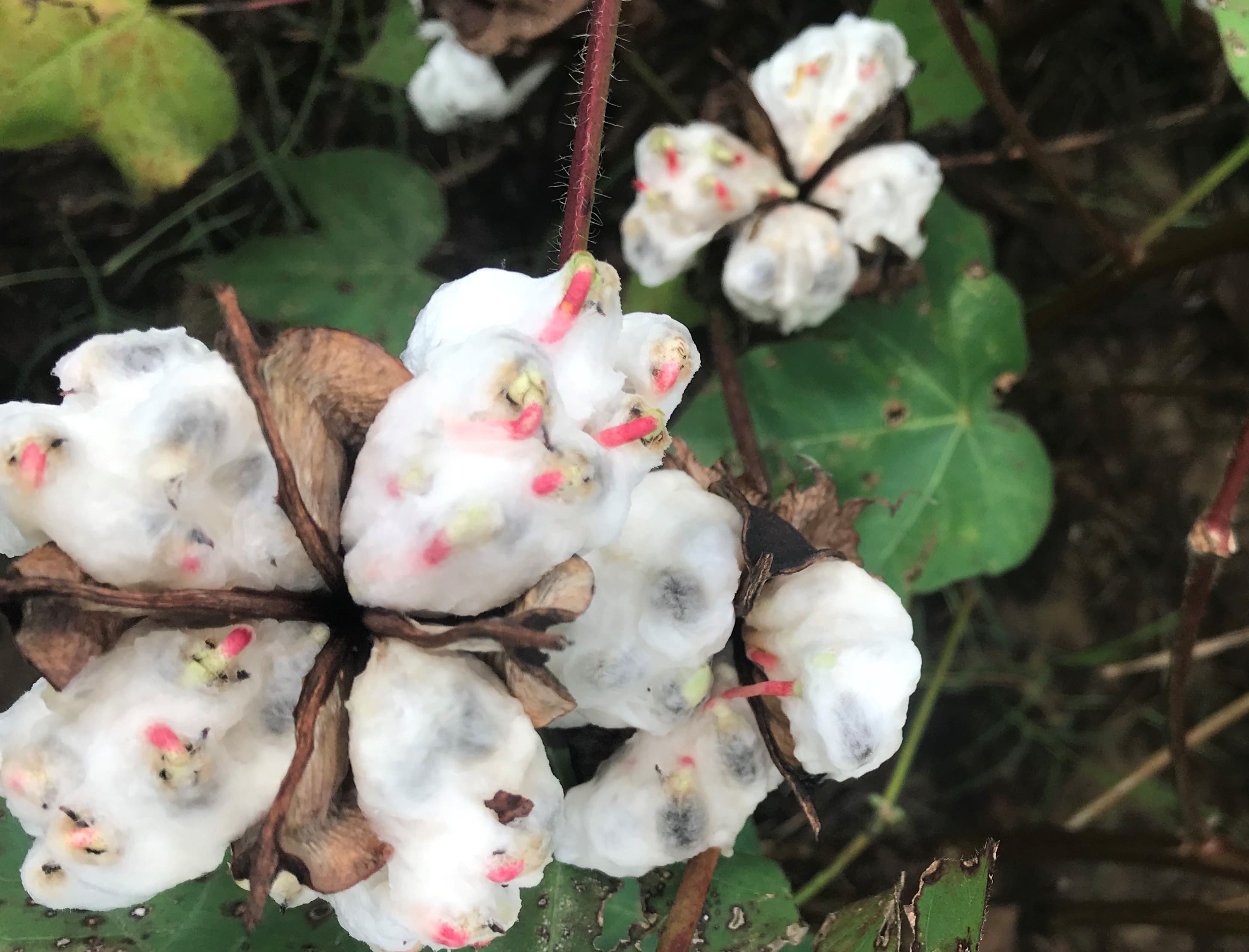The past six days of rain found the vast majority of our Upper-MidSouth cotton crop defoliated and open. Unfortunately, these conditions supported emergence of cottonseed while still within the boll- commonly referred to as sprouting. In this blog, I briefly cover best management practices to protect the existing fiber quality.
While sporadic rainfall throughout harvest typically results in negligible impacts on yield and fiber quality, recent weather conditions have more in common with a stalled tropical storm than a normal September front. Unfortunately, I began to find emerged radicles in scattered bolls late Monday afternoon (Sept 24th) and began receiving pictures early Tuesday morning (Sept 25th). By this morning (Sept 27th), cotyledons were becoming more visible as they were attempting to unfurl. While it is difficult to estimate both the percentage of bolls impacted within each acre and the number of acres impacted, it is clear that sprouting is going to be a factor for many.
Moving forward, we must protect the remaining fiber quality of this crop by allowing the seedcotton and seedlings to completely dry out before harvesting. Desiccants (paraquat or a PPO-inhibitor) can accelerate the drying down of the seedlings but coverage is typically poor and results have been inconsistent. Given regrowth is also an issue for much of this crop, it is likely that Aim, Display, ET or Sharpen will be the best route forward for some. I suspect others will likely pass on this additional expense in order to speed harvest. You must balance the added expense of this additional application and delayed harvest associated with observing labeled pre-harvest intervals with our current forecast and your picker capacity. Keep in mind dry, windy conditions will likely dry out young seedlings almost as quickly as a desiccant.
The pressure to harvest as quickly as possible is extreme after a wet period, but rushing into the field will result in more severe discounts. Excessive moisture at harvest will support rapid temperature increases within modules and extreme fiber quality degradation. In order to protect the existing quality of this crop, we have to dry out before we move back into picking.
For additional information, please see the National Cotton Council’s Recommendations for Handling Seedcotton Exposed to Excessive Rainfall and Dr. Guy Collins and Dr. Keith Edmisten’s article Seed Sprouting Observed.


